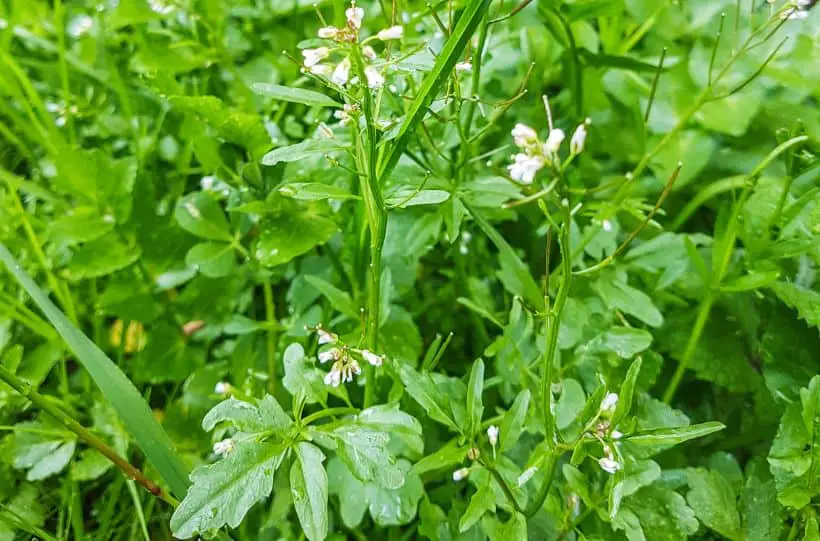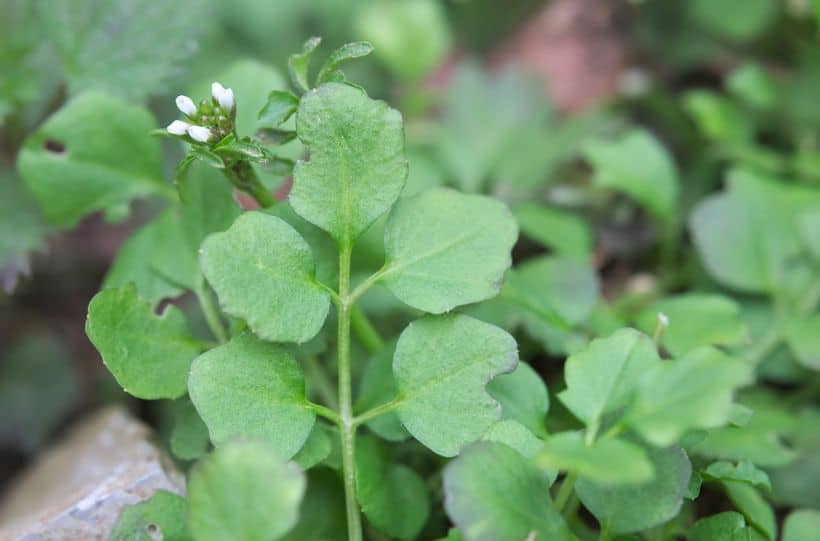How to Grow Bittercress (Cardamine hirsuta)
Did you know that this broadleaf weed native to Europe you see growing everywhere is edible and has numerous culinary and medicinal benefits? It grows short and can be found on cracks in walls, bare ground, and sidewalks. It is an easy plant to grow in containers and pots.
Bittercress springs from a basal rosette and grows up to about nine inches. This weed contains vitamin C, calcium, beta carotene, magnesium, and other compounds.
It has a mild, pepper-like taste that makes it useful as a flavor in the culinary world. Here is a guide on how to get started with growing hairy bittercress.

Other names: Hairy Bittercress, Shot Weed, Hoary Bittercress, Land Cress, Flick Weed, Lambs Cress, and Spring Cress
Best Time for Growing
The growing season for bittercress starts in January and stretches till the end of the year. The germination period is between March and August. When the plant begins to mature, you will notice tiny white flowers sprouting from the plant’s stem.
Hairy bittercress blooms continuously until autumn. The plant is categorized as an invasive plant because it self-pollinates easily.
Once the flowers have matured, the seed pods rapture and scatter the seeds in the garden. The process of rapturing of bittercress seed pods is called ballochory.
New plants start growing from the scattered seeds once the frost is over. You can easily manage the spread of this weed by applying a thick layer of mulch to the garden after harvesting.
Soil Preparation
Hairy bittercress thrives in open, rich grounds. They are not very particular about the soil type. They can grow in almost all zones – including the dry ones – because they have a tap root system that goes deep into the soil in search of moisture. Add organic compost to the garden and mix well before scattering the seeds.
Planting Hairy Bittercress
Start your hairy bittercress garden patch from seeds. Scatter the seeds over the prepared garden. You do not need to cover the seeds with topsoil after scattering them. The seeds need light for germination. Germination should occur within a few weeks.
Caring for Hairy Bittercress
Hairy bittercress is almost care-free. Once it has formed, your job is done. The taproot system enables the plant to seek water and minerals from the ground. Water only when the ground becomes excessively dry.
Pests and Diseases
Hairy bittercress can be a host to nasty pests and diseases. This prevents the plant from becoming a good companion plant. Tomato spoiled wilt and cucumber vein are some of the diseases hairy bittercress can bring to your tomato and cucumber garden.
Harvesting
All parts of bittercress are edible. To harvest, hold the plant at the base and pull it off the ground. Hairy bittercress leaves can be eaten raw in salads or mixed in soups and dishes.
It is also an excellent garnishing herb. Bittercress leaves have a mild, pepper-like flavor. They are not overpowering, even when eaten raw.

Consume hairy bittercress when fresh. The herb wilts quickly after harvesting. You can prolong the shelf life by placing the plant in a vase of clean water after harvesting.
And if you’re interested in growing other edible weeds and medicinal herbs, check out these guides next:

